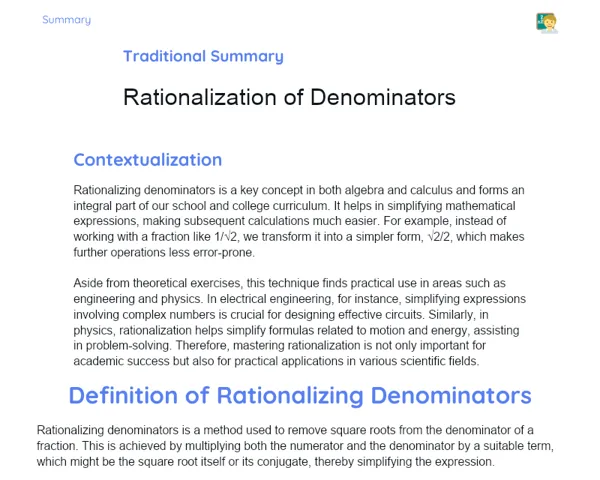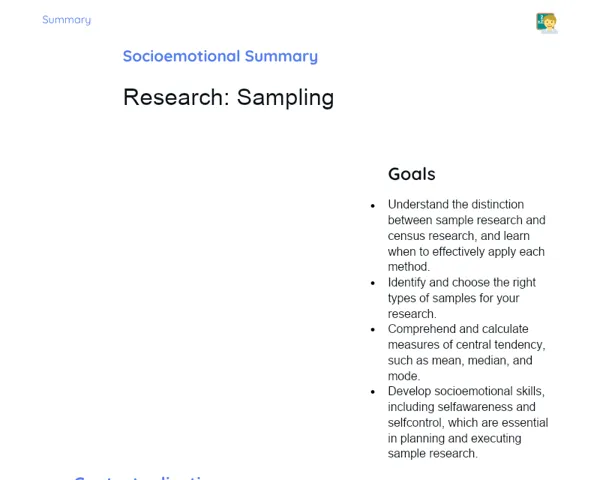Objectives
1. 🎯 Understand and utilise the classic formula for computing the area of a triangle in various scenarios.
2. 🎯 Sharpen skills to solve real-world problems involving triangle area calculation, especially in technical drawing and architectural design.
Contextualization
Did you know that the triangle area formula we use today was pioneered by our very own Indian mathematicians like Bhaskara I and Aryabhata over a thousand years ago? This remarkable discovery not only transformed mathematics but also greatly influenced fields such as engineering, architecture, and even agriculture by enabling precise measurements for land taxation and distribution. Learning how to calculate the area of a triangle is much more than a mathematical exercise—it is a fundamental tool that has shaped many aspects of our everyday life and development over the centuries.
Important Topics
Triangle Area Formula
The traditional formula for finding the area of a triangle is based on its base and height. The area is given by A = 1/2 * b * h, where 'b' stands for the base and 'h' is the height drawn perpendicular to that base. This formula is not only essential for grasping basic geometry but also for practical applications like architecture and engineering.
-
The base of a triangle can be any one of its sides, provided the height is measured perpendicularly from that side.
-
The height is the perpendicular distance from the chosen base to the opposite vertex.
-
Multiplying the length of the base by the height and then dividing by 2 yields the area; this rule applies to all types of triangles, no matter their shape.
Alternative Area Calculation Methods
Apart from the standard formula, there are other ways to calculate the area of a triangle. One common method is to split the triangle into simpler geometric shapes like rectangles or trapezoids, whose areas are easier to work out. This technique is especially useful when the height is not directly available.
-
One approach is to divide the triangle into two smaller triangles by drawing a line from the vertex opposite to the base, parallel to the base. This can help in determining an equivalent height.
-
This method can be applied to triangles of any size or shape, making it a versatile tool for area calculation.
-
Exploring and using alternative methods not only strengthens your understanding of geometry but also nurtures problem-solving skills and creative thinking.
Practical Applications in Real Life
Calculating the area of a triangle finds plenty of real-life applications, ranging from product design to architecture and urban planning. For instance, architects determine the quantity of materials needed for triangular sections in buildings, while urban planners incorporate triangular spaces in the design of public parks and community spaces.
-
In interior design, knowing how to compute the area of a triangle helps in optimising space and resource usage, ensuring efficiency as well as aesthetic appeal.
-
In agriculture, applying triangle area calculations can aid in planning plantation layouts and irrigation, thereby improving productivity and sustainability.
-
These practical uses underscore the importance of geometry, proving that mathematical knowledge extends far beyond the classroom into everyday professional practices.
Key Terms
-
Triangle: A two-dimensional shape with three sides and three angles.
-
Height of a Triangle: The perpendicular distance from the base of a triangle to the opposite vertex.
-
Triangle Area Formula: A = 1/2 * b * h, where 'b' is the base and 'h' is the height.
For Reflection
-
How can understanding the area of a triangle assist you in everyday life beyond textbook problems?
-
Why should we consider alternative methods for calculating triangle area even when the standard formula works?
-
In what ways can triangle area calculations influence career choices in fields like architecture, engineering, and agriculture?
Important Conclusions
-
We delved into the traditional formula for calculating a triangle's area, A = 1/2 * b * h, and discussed its importance in practical fields such as architecture and urban planning.
-
We also looked at alternative methods for computing the area, highlighting the need for creativity and flexibility in solving mathematical problems.
-
We recognised that calculating the area of a triangle is relevant to many professions and daily situations, reinforcing that mathematics is a vital, practical tool rather than just a theoretical subject.
To Exercise Knowledge
- Draw three distinct triangles and calculate the area of each using both the classic formula and an alternative method. Compare your findings and discuss any differences.
- Design an interior layout for a triangular room by calculating the amount of paint required for its walls.
- Use a design app or computer program to sketch a park that includes triangular sections. Compute the total area of the park and discuss how the triangle area figures into the overall spatial design.
Challenge
Junior Architect Challenge: Imagine you are an aspiring architect tasked with designing a park featuring a large central triangle. Calculate the area of each park section, considering different zones such as a playground, a picnic spot, and a green space. Present your design along with the area calculations and the rationale behind each area allocation.
Study Tips
-
Practice drawing and measuring various types of triangles at home using simple materials like paper, a ruler, and a pencil. This hands-on approach will help you better understand how the base and height determine the area.
-
Watch educational videos online that demonstrate how triangle area calculations are applied in real-life contexts like architecture and engineering. It can make the subject more engaging and practical.
-
Form study groups with your classmates to work through triangle area problems together. Discussing different methods can be an excellent way to deepen your understanding and overcome any difficulties.



